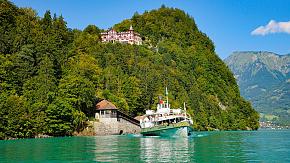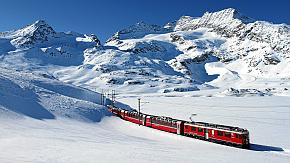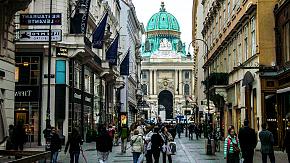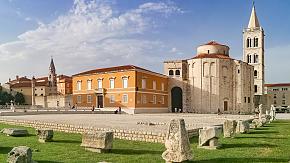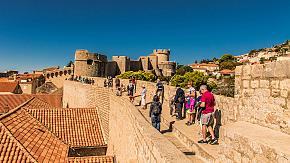How to Plan a Trip to Europe With Ease
Europe, a romantic place that has rich culture, delicious food, and captivating scenery, is a dream travel destination for many people. Whether you're exploring ancient castles, relaxing on sunny beaches, or chasing the beautiful northern lights, every European journey promises to be colorful and worth cherishing.
When is the Best Time to Visit Europe
The best time to visit Europe is from March to early June and from September to November. During these times, the weather is comfortable and the views are lovely.
Spring (March to Early June)
This period is Europe's shoulder season. The weather starts to get warmer, days get longer, and you can really feel spring in the air. Southern European countries like Spain and Italy enjoy mild weather, perfect for outdoor exploration. However, Northern and Eastern Europe can remain cold in March, and you might even see snow in some mountainous areas, so remember to pack warm clothes.
Autumn (September to November)
During autumn, the weather in Europe is comfortably cool, and leaves turn golden, making it an excellent season for enjoying natural scenery. In some areas, like Northern Europe, the chance of rain increases, and temperatures start to drop from October. At the same time, some regions like Greece and France enter their harvest season, with grapes and olives maturing, creating a beautiful scene of abundance in the fields.
Summer & Winter (Late June to August/December to February)
Of course, summer and winter are also worth visiting. In summer, you can head to the coastal areas of Southern Europe to enjoy the sun and beaches. In winter, venture to Northern Europe or the Alps for skiing, hot spring experiences, or the breathtaking moments of the northern lights.
 Northern Lights in Norway
Northern Lights in Norway
Crowds & Cost
The peak season in Europe is roughly from July to September each year, with July and August being the busiest months. During this time, tourist numbers are at their highest, and flight and accommodation prices are typically increased. November to March is the off-peak season; aside from major holidays, most places will have fewer crowds and lower costs. However, it's worth noting that during the northern lights viewing season, some popular observation spots may still become crowded, with prices rising accordingly.
Best Places to Visit in Europe
Europe offers an incredible mix of historic cities, scenic landscapes, and world-famous cultural attractions. From France and Italy to Switzerland, Spain, and Greece, each country presents its own unique charm and signature experiences. Whether you are dreaming of iconic landmarks, romantic coastlines, or picturesque countryside, Europe has destinations that cater to every style of traveler. This table can provide some useful references.
|
Places to Visit
|
Days to Spend
|
Highlights
|
|
|
Northern Europe
|
Iceland | 5 Days |
Reykjavík: Blue Lagoon, Thingvellir National Park, Gullfoss Waterfall; Selfoss: Selfoss New Old Town, Kerid Crater |
| Norway | 6 Days |
Oslo: Oslo Cathedral, Akershus Castle, Vigeland Park; Bergen: Bergenhus Fortress, Bryggen |
|
|
Eastern Europe
|
Bulgaria | 8 Days |
Sofia: Rila Monastery, The Largo, Alexander Nevsky Cathedral; Kazanlak: Rose Valley, Kazanlak Tomb |
| Romania | 6 - 8 Days |
Brasov: White & Black Towers, St. Nicholas Church; Sibiu: Brukenthal Museum, Piata Mare (Large Square) |
|
|
Western Europe
|
France | 8 Days |
Paris: Louvre Museum, Eiffel Tower, Versailles Palace; Avignon: Avignon Cathedral, Pont Saint-Benezet |
| Germany | 5 - 7 Days |
Munich: Marienplatz, Peterskirche; Weimar: Moritzburg Castle |
|
|
Southern Europe
|
Italy | 7 - 12 Days |
Rome: Colosseum, Roman Forum; Florence: Cathedral of Santa Maria del Fiore, Uffizi Gallery; Venice: St. Mark's Basilica, Doge's Palace |
| Portugal | 8 Days |
Lisbon: Belem Tower, Jerónimos Monastery, Palace of Ajuda; Porto: Porto Cathedral, Lello Bookstore |
|
| Greece | 7 - 11 Days | Island Hopping: Athens, Meteora, Mykonos, Santorini | |
Get Your Visa Ready
Before you travel to Europe, don't forget to apply for a Schengen visa. This is a short-stay visa issued to non-EU citizens, allowing them to travel within the Schengen Area for up to 90 days within any 180-day period.
Most European countries belong to the Schengen Area, and holding a valid Schengen visa allows you to travel freely within this zone. However, it's important to note that the Schengen visa does not apply to countries like the UK, Albania, or Serbia, and separate visas are required for these destinations.
For itineraries covering multiple countries, you should apply for your visa at the embassy or consulate of the country where you will spend the longest time. If your stays are of equal duration, then you should apply to the country of your first entry.
Remember to plan your entry and exit order and confirm your visa's validity and permitted length of stay before your trip. This will help you reduce any potential issues upon arrival.
 7 Steps to Apply for a Schengen Visa
7 Steps to Apply for a Schengen Visa
How to Get Around Europe
• By Air: This is the fastest way to get around Europe, perfect for moving between countries and offering great views from above. Be aware that budget airline tickets are usually non-refundable and non-changeable, so make sure you're on time for your flight.
• By Bus: Bus tickets are usually cheap, and they can get you to places trains don't. It is a cost-effective option, with no transfers needed, even if it's not the fastest. For example, a 158 km bus trip from Geneva, Switzerland, to Lyon, France, takes about 2 hours and costs around 17 USD.
• By Train: Trains are well-connected and allow you to enjoy the scenery along the way, making them suitable for medium- to long-distance trips. For instance, you'll get to enjoy the beautiful views of the Alps while traveling through countries like Switzerland, France, and Italy, an experience a plane simply can't offer. Compared to buses, trains tend to be more comfortable and convenient.
• By Car: Ideal for exploring rural areas or places without great public transport, driving provides more flexibility. It's particularly recommended for families or if you have a lot of luggage. Remember to check local traffic laws and restricted driving zones in each country. Some countries may also require an International Driving Permit (IDP), so it's a good idea to confirm this before your trip.
Essential Tips for First-Timers to Europe
• Check Your Passport: Remember to check your passport's validity, ideally for at least six months beyond the dates of your trip.
• Buy Travel Insurance: It's recommended to purchase travel insurance, especially for unexpected situations like medical emergencies, lost luggage, and flight delays.
• Currency Note: The euro is the common currency in most countries, but places like Poland, Denmark, and Hungary use their own currencies. It's a good idea to bring some cash. Before exchanging currency, always check the exchange rate and any fees.
• Credit Card Note: Credit cards are widely accepted. It's smart to inform your bank about your international travel to avoid any potential issues.
• Buy SIM Card: You can buy a local SIM card for convenient calling and internet access.
• Bring Plug Adapter: Different countries use different power plug types, so don't forget to bring a suitable plug adapter. Types C and F are the most commonly used in Europe.
• If you need more information, feel free to contact us.
Related Posts You May Like
What Our Clients Say
Explore the latest verified reviews of Odynovo's travel services on Tripadvisor, Google, Trustpilot, Product Review and more trusted platforms.

